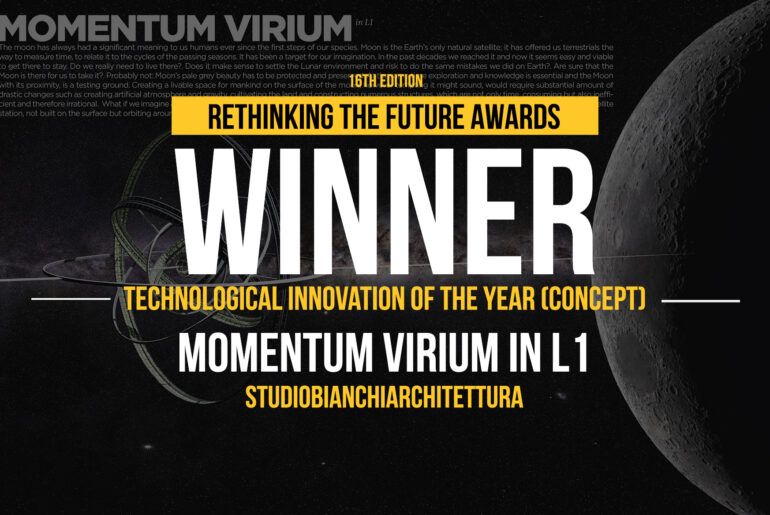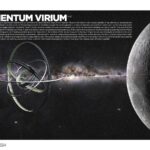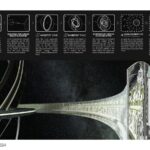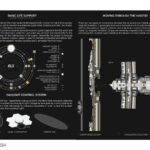Momentum Virium is a space habitat orbiting the moon. It works as a gyroscope and consists of three rotating circular rings.
Rethinking The Future Awards 2024
First Award | Technological Innovation of the Year (Concept)
Project Name: Momentum Virium in L1
Category: Technological Innovation of the Year (Concept)
Studio Name: Studio Bianchi Architettura
Design Team: Sergio Bianchi, Jonghak Kim, Simone Fracasso, Alejandro Jorge Velazco Ramirez
Area:
Year: 2024
Location: L1 Lagrange Point
Consultants:
Photography Credits:
Render Credits:
Other Credits:
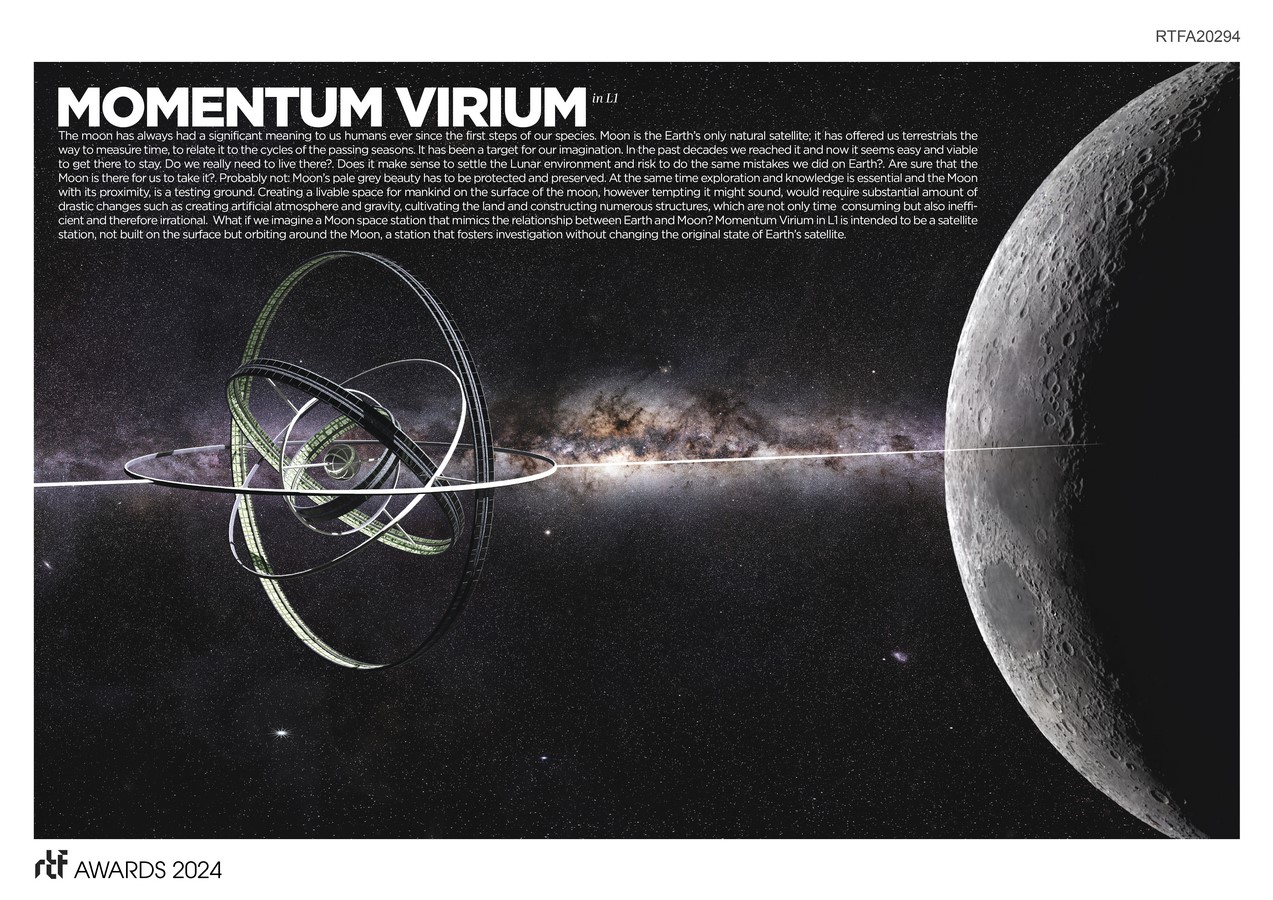
The station will be connected with the lunar surface by a space elevator. A space mirror above will reflect the sunlight.
- Orbital Issues and Attitude Control Systems
Given two celestial bodies, there are 5 different Lagrangian points (where all the forces acting on a third body are null): Momentum Virium will be placed at L1 (Earth-Moon direction, 55’000 km above Moon’s surface). Since it is an unstable point, it is required to control the position and the orientation of the lunar base. Using the gyroscopic effect given by the structure and controlling the rotation of the three rings, one can control and adjust the altitude of the lunar station.
- Material Characterization and Station Sizing
The materials used for the habitat rings are light yet strong; an 80% Aluminium (density 2’700 kg/m³) and 20% Titanium (density 4’500 kg/m³) alloy is used. As for the structure, Titanium is used in order to create optimum gyroscopic effect which increases in proportion to the weight.

To achieve a balanced configuration, the space mirror (100% Beryllium, 1’850 kg/m³) will function as the counterweight for the station, placed 120’000 km above and connected to the station through another carbon nanotube cable. Estimating an initial population of 100,000 people increasing with time, the radii of the rings are:
1) R1 = 1,600 m
2) R2 = 3,200 m
3) R3 = 4,800 m
Assuming a rectangular shape (for simplicity of calculations, with a thickness of 0.5 m, the total volume of the shells of rings is 3.4864 x 10 7 m³. This means that the total mass of the rings is 1.06×10^11 kg.
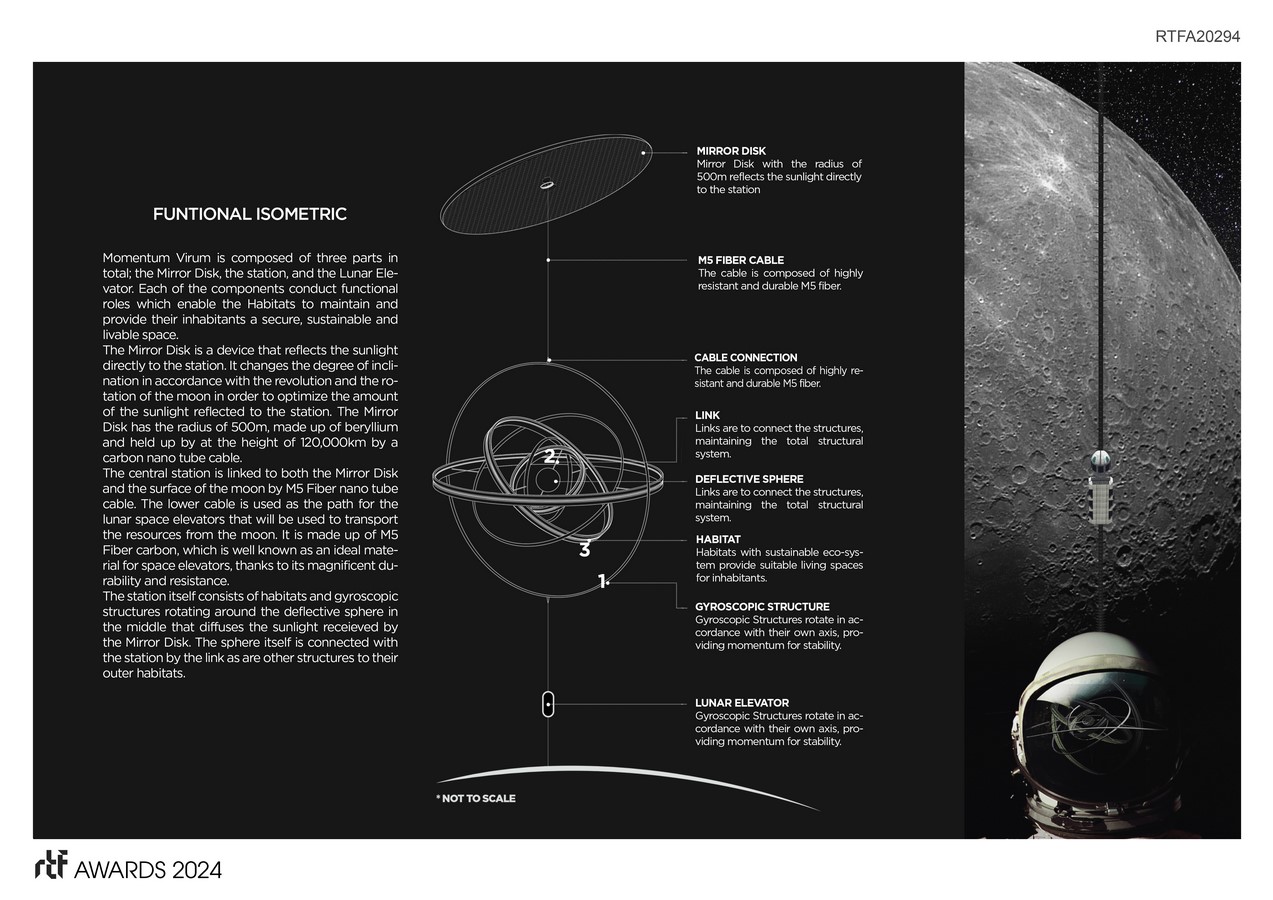
- Water/Air Supply and Energy Demands
In the design, we adopted the same Environmental Control and Life Support System (ECLSS) used at the International Space Station where the water is produced by both the Sabatier Reactor and the Fuel Cells. As for the energy required, we need to consider the energy needed to make the rings spin that is estimated to be 0.11 Gwatts. Regarding the energetic needs of the station, we’ve calculated an amount of energy of about 0.52GWatts.

- Energy system and Generation
One of the most important aspects is the energy supply: using the most efficient solar energy cell ever created, it is possible, with a proper area sizing, to provide enough energy required by the station with the cell. In fact, by placing the cells along the side surface of the outer and inner ring (500 m wide) a useful area of 6.4 x 106 m² is obtained. Finally, assuming irradiated power as 1’400 w/m², and an efficiency of 45%, the total energy generated reaches up to 4.32GWatt.

